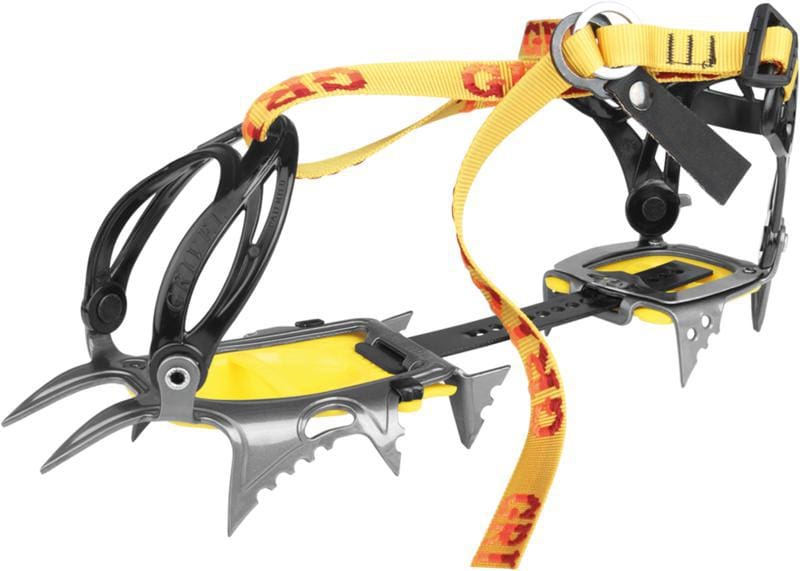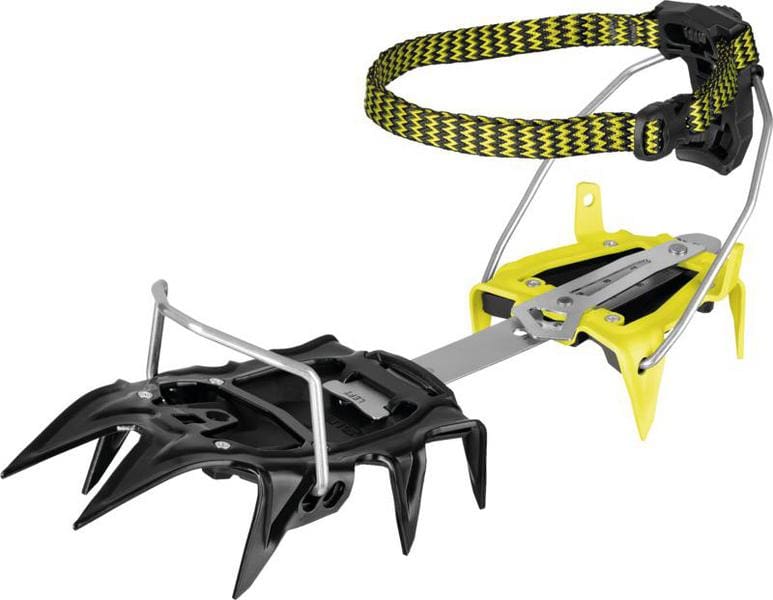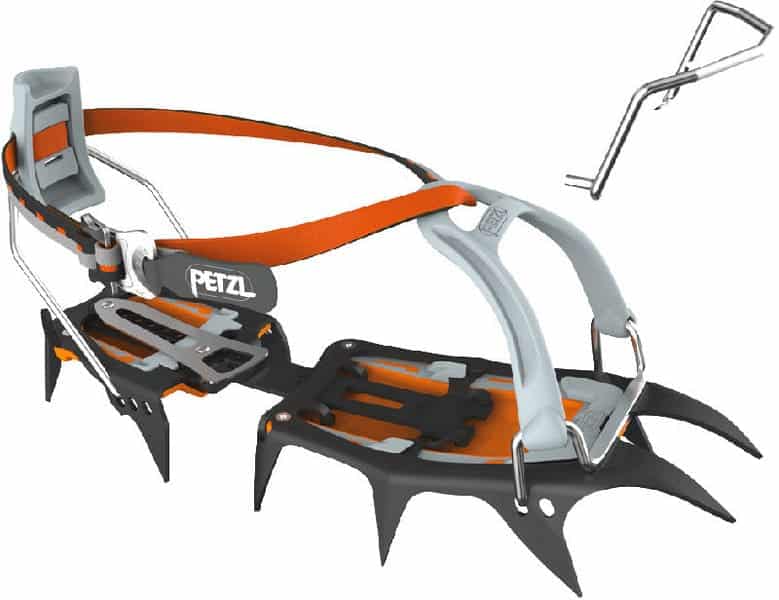Crampons are part of the standard equipment on glaciated alpine touring terrain and are also indispensable for use on steep ice. The devices are much more than just metal spikes on the feet - they offer different properties depending on use and preference. Even those that concern security. We explain the most important differences to you.
A contribution by Fabian Reichle - Bächli Bergsport
Mountain sports equipment is becoming more and more sophisticated: weather-resistant textile membranes, ultra-light backpacks, high-tech fibers in ropes. Crampons look downright archaic. Metal spikes attached to the shoes, nothing more. At least one would think at first glance. Because even with crampons there are technical properties and differences that go far beyond personal preferences. Since the devices have a direct impact on safety on the mountain, it is worth taking a closer look.
Crampons have to be tough and reliable.
Crampons have to be tough and reliable. They are expected to cling to ice and snow, but also to grip rocks. Without getting dull quickly. To do this, they should hold tightly to the shoe and be easily attached and removed from it.
Fastening systems
Speaking of shoes: their design defines which binding system fits them. Crampon-compatible or partially crampon-compatible shoes, as the name suggests, allow crampons to be attached. However, by definition, only so-called belt bindings can be mounted on the latter models.
This type of crampon has cups at the front and back that encircle the shoe. The device is lashed with straps (e.g. made of nylon). This type of model is sufficient for simple glacier treks and the like. However, the fit and stability are no longer justifiable for more intensive activities.

Rocker arm bindings are used in technical terrain. The rocker arm is located on the rear part of the crampon. A bracket is used at the front, which can also be precisely placed on the shoe. The prerequisite for this are mountain or ski boots with hard edges - or in other words: crampon-compatible shoes.

Rocker arm bindings are lightweight and quick to attach. The system is extremely practical, especially on ski tours with stiff shoes. Whereby a dangerous misconception persists: namely that rocker arm crampons are absolutely bombproof on mountaineering boots.
If rocker arm bindings are not stiff enough, the crampons can slip away.
And that can be fatal under certain circumstances. That's why there is also a hybrid solution - a combination of a cup at the front and a lever at the back. This all-rounder variant covers a wide range of touring options.

application
Even if the locking systems specify the purpose more or less clearly, there are other properties of crampons that should be taken into account, depending on the terrain in which you are traveling.
- Easy alpine tours and glacier treks
Walking comfort is in the foreground here. Therefore, these crampons should be light, so aluminum is the best base material. Ten to twelve points are used here. The two front points can be used for short ice and steep slopes. - High-speed tours for the advanced
On demanding tours, there will most likely be more rock contact. Aluminum would be damaged too quickly here, so it is better to use sturdy steel. Twelve points are standard. Additional, angled front points promise more hold. - Steep ice and waterfalls
In extreme terrain, the focus is clearly on the front peaks. These are aligned for the vertical like pimples.
And otherwise?
In addition to the clear purpose of use and safety-relevant aspects, there are a few other properties that vary depending on your preference. Antistoll plates - although these are actually part of safety - are noteworthy parts of crampons as well as the length and alignment of the spikes. Here a decision has to be made between walking comfort and grip strength.
Crampons have to be regularly maintained, sharpened and checked for material wear.
Last but not least, an inconspicuous but not unimportant factor comes into play: What to do with the crampons when you don't need them? If you don't want to have tattered clothes in your backpack, you can store your claws in a separate transport bag.
And if the crampons are stored in the cellar after intensive use, they should be regularly cared for, sharpened and inspected for material wear - so that the archaic-looking devices will bite into ice and rock with their claws for a long time to come.
That might interest you
- Little frills, a lot of performance: The LVS Powder BT from Pieps
- Climbing ropes: types and areas of application
- A helmet for all your outdoor adventures: Petzl Meteor
+ + +
Credits: Cover picture Unsplash

